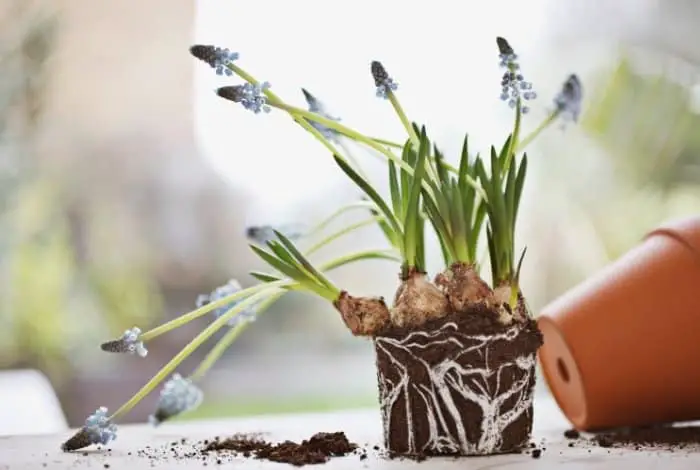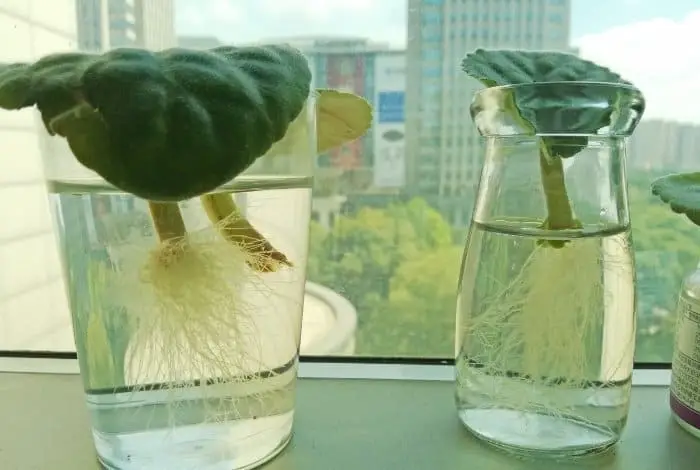Last Updated on December 27, 2022
Transferring soil plants to hydroponic is quite possible if you follow the right steps. Rather than waiting on germinating seeds and growling seedlings, you can simply send them into the soil. So, when they reach about 3 to 4 inches long, they are set to be transferred into your hydroponics.
However, you need to get the process of transferring soil plants to hydroponic correctly or they won’t come out successful.
This is why we’ve put together this article to enlighten you on the steps to successfully transfer soil plants to your hydroponics system. So, read on to learn.
Materials Needed For Transferring Soil To Hydroponic
The following materials are required for transferring your soil plant into a hydroponic system:
- A plant from dirt.
- Water to wash off the root system.
- Growing medium.
- Net pots.
- Hydroponic system.
iDOO 12Pods Indoor Herb Garden Kit
Steps On Transferring Soil Into hydroponic
Even though transplanting traditional soil plants into the hydroponics system looks pretty easy, it’s important you get the steps right. This way, common errors that some growers make are avoided and you get an accurate result at the end.
Transferring soil plants to a hydroponic system is pretty easy. Just follow these steps to achieve a smooth transition:
- Use Matured Plants Only
The first thing is to obtain your plant or seedlings and make sure they are fit enough for the transition. Use seedlings that are at least 3 inches tall.
- Remove Plants From Soil
With care, remove the plant from the soil and ensure you don’t pull it out. Make sure the roots are safe and intact as you carefully take them out.

- Remove Soil And Clean The Plant
Next, carefully give the root a little tap and remove the dirt around the plants still ensuring the root is safe. After doing this, go ahead and rinse the plant with water. Try to dip the whole root into the water and rinse carefully.
If you notice any pests around your plant, rinsing them will take them out. However, you can make use of neem oil to further rid them off.
- Place In Hydroponic Net Pots
Now, get your net pots and put a little growing medium. Gently spread the plant root into the net pot and fill it up with the growing medium of your choice.
- Add Appropriate Nutrients
Supply your plants with the appropriate nutrients. Try not to overfeed or underfeed the nutrient.
- Leave Set Up In The Dark
Allow the plant to adjust its new environment by leaving it in a dim light area for a couple of hours. The root does not really require light to develop.
Additional Tips To Avoid Shock
Plant shock when it comes to transferring soil plants to a hydroponic system is not unlikely, especially among beginners. If your transplant fails to develop after transplanting, you might be wondering what you did wrong. Just do a bit of check and try again carefully this time.
Also, take note of the following tips so you can prevent plant shock as your plant transition into your hydroponics system:
- Make sure the plant to be transplanted is healthy and matured enough.
- Prepare your growing medium-well.
- Sterilize the new environment your plants will be transitioning to. Remember they are vulnerable, so try to keep them healthy.
- It helps to pick plants to be transplanted during their vegetative and seedlings periods. Never allow them to reach or near their flowering period before transplanting.
- Make sure the temperature is maintained optimally. Nutrient water temperature should fall between the range of 65 to 75 degrees Fahrenheit.
- Try to select roots with more hairs or long hairs. This is so the roots are capable of reaching the nutrient reservoir and absorbing adequate nutrients for growth.
- Try to balance the soil conditions and hydroponic conditions as your plant transition. For example, you need to supply your transplanted plant with the right nutrient for its healing and growth. If you can, it helps to measure the soil nutrient before transplanting so you can keep the same nutrient levels when you transplant.

Plants That Has High Chance Of Smooth Transition
You should know that not all types of plants will transition successfully. Some plants have a higher tendency for the smooth transition than others. Examples are Pepper, tomatoes, spinach, mint, spring onions, basil, parsley, cilantro, and so on.
Conclusion
The transition of soil plants into a hydroponic system needs to be done accurately to avoid plant shock. If you follow our guidelines, you can be sure of a successful transition.

Eunice is an enthusiastic gardener with a passion for growing beautiful flowers. She loves nothing more than spending time in her garden, tending to her plants and enjoying the outdoors. Eunice has been gardening for over 15 years and has developed a unique style of landscaping that is both practical and aesthetically pleasing. She is especially fond of growing roses and enjoys experimenting with different varieties and colors. Eunice takes great pride in her garden and often shares the fruits of her labor with friends and family. In her spare time, she enjoys reading gardening magazines and attending local horticulture events. Eunice is passionate about her hobby and is always eager to share her knowledge and experience with others.

